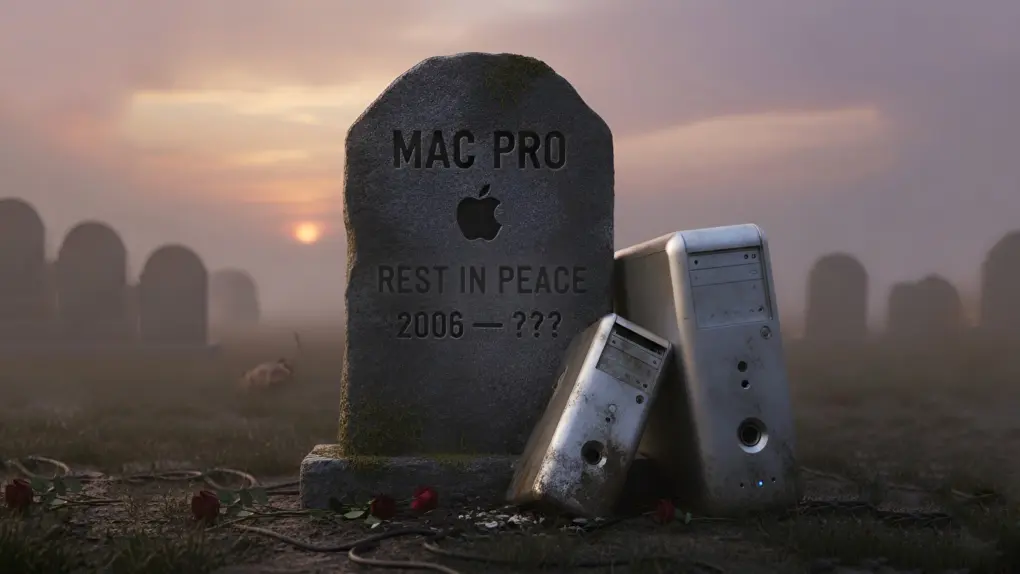A new report says Apple has “largely written off the Mac Pro,” but before you get mad, you need to understand why Mac tower desktops don’t make sense anymore, and haven’t for years.
It all comes down to the architecture of Apple’s M-series processors.
Mac Pro: A powerhouse of the past
Apple’s Mac Pro series is a line of high-end, modular desktop workstations built for professionals who need extreme performance for demanding workflows. The computers are commonly used by film editors, 3D animators, VFX artists, music producers, software developers and scientists who work with massive datasets or complex simulations.
Apple designed the Mac Pro to deliver sustained power with advanced cooling, workstation-class CPUs, large memory capacities, and highly expandable internal architecture.
Trouble is, Apple can no longer make a Mac with a highly expandable internal architecture. And it’s absolutely not because the company is run by idiots who hate graphics professionals.
Apple silicon killed the Mac Pro
A serious graphics workstation requires a blazing-fast processor, of course. But lots of RAM is also necessary, plus truckloads of storage and maybe an external graphics processing unit (aka eGPUs). Upgrading most Macs with all the extras has always been nigh impossible, but the Mac Pro line was the standout. Apple designed Mac Pros for upgradability from the start. Take the 2019 model — users could swap and upgrade almost every component, including RAM and GPUs.
But 2020 brought Apple silicon to the Mac. The M1 chip — the first in a family of ultra-efficient, high-performance system-on-a-chip processors — brought a boost of speed to Macs of all types. That continued through to the M5, which arrived last month. As a bonus, the chips offer great battery life to MacBooks.
But getting so powerful and efficient requires M-series chips to tightly integrate CPU, GPU, memory and specialized accelerators into a single unit — that’s what it means to be a system-on-a-chip processor. Data moves more quickly between the components built into the chip than it can between separate processor, RAM and GPU chips.
Plus, as Apple put it back in 2020 when the first M-series chip launched, the unified memory architecture “allows all of the technologies in the SoC to access the same data without copying it between multiple pools of memory, further improving performance and efficiency.”
Forget about RAM and GPU upgrades
The weakness of the Apple silicon architecture is that individual components can’t be upgraded. It’s not possible to add more RAM to the SoC or swap out the GPU.
While it’s theoretically possible to add more RAM off the chip, this would not take advantage of the significant speed boost that comes from memory built into the chip. In short, this add-on RAM would slow down performance, the opposite of the desired effect. That’s likely why Apple doesn’t offer the option.
The same problem affects eGPUs. Apple used to sell these for Intel-based Macs but stopped because they aren’t compatible with the M-series processors.
The only post-sale configuration option in the 2023 Mac Pro model comes from the six full-length PCI Express gen 4 slots, which allow users to easily plug in high-speed SSDs.
Not a serious problem
It should be clear that the unified memory architecture is not a flaw of Apple silicon. It’s what allows MacBooks to provide excellent performance paired with long battery life. And MacBooks make up about 90% of Mac sales.
Another beneficiary of Apple silicon: the Mac Studio. Introduced in 2022, the Mac Studio takes the place of the Mac Pro on the desks of many graphics professionals.
“The sentiment internally is that the Mac Studio now represents both the present and future of Apple’s professional desktop strategy,” Bloomberg reported Sunday.
Realistically, it’s been clear that the Mac Pro has been eclipsed since this spring, when the Mac Studio got a major chip upgrade so it can be configured with an M3 Ultra processor. The Mac Pro didn’t get the same upgrade, leaving it with an older M2 Ultra processor, making the latest Mac Studio up to 30% faster.
And many power users don’t need even that. Turns out a MacBook Pro with one of Apple’s M series “Pro” chips can fully meet the requirements of many professionals, even ones that do animation, 3D rendering, working with huge datasets, etc.
So while the Mac Pro might be over — maybe — the loss isn’t a tragedy. It’s just Apple leaving behind a product line whose time is over. Other Macs have stepped up to replace it.


